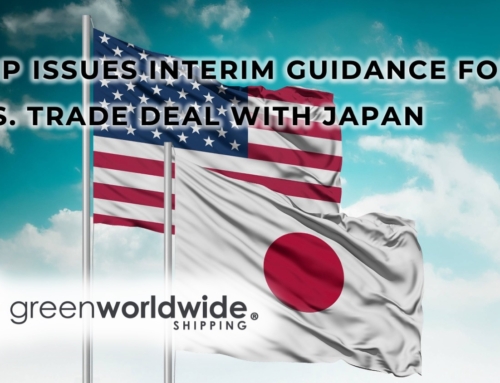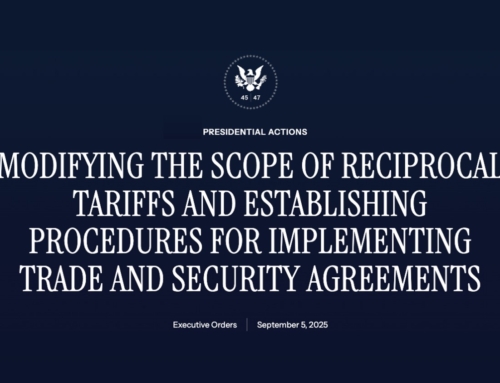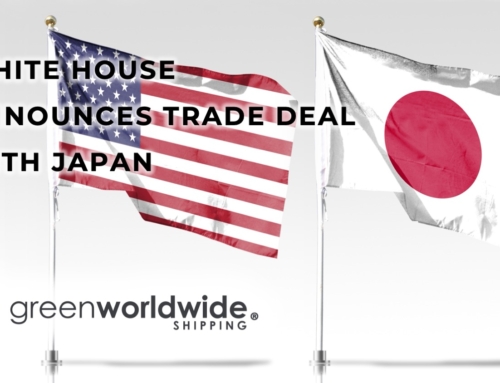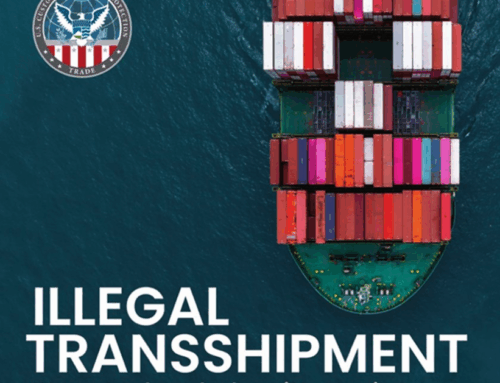On June 16, 2025, the United States President signed an executive order that formally begins carrying out the General Terms of the United States-United Kingdom Economic Prosperity Deal (EPD), the framework President Trump and Prime Minister Keir Starmer unveiled on 8 May. The order cites authorities under the International Emergency Economic Powers Act (IEEPA), the National Emergencies Act and Section 232 of the Trade Expansion Act, declaring the agreement “a historic trade deal” that will expand market access for U.S. exporters while reinforcing national-security objectives.
WHITE HOUSE FACT SHEET: IMPLEMENTING THE GENERAL TERMS OF THE U.S.-UK ECONOMIC PROSPERITY DEAL
AUTOMOTIVE TARIFF-RATE QUOTA
The order’s immediate commercial impact is in the automotive sector. Seven days after the order is published in the Federal Register, up to 100,000 passenger vehicles built in the United Kingdom each calendar year may enter the United States at a combined 10 percent duty—7.5 percent under Section 232 plus the standard 2.5 percent most-favored-nation (MFN) rate. Vehicles exceeding the annual quota remain subject to the 25 percent Section 232 tariff. Qualifying U.K. automotive parts used in those vehicles will also benefit from the 10 percent combined rate once the Harmonized Tariff Schedule of the United States (HTSUS) is updated.
AEROSPACE DUTY RELIEF
For civil-aircraft supply chains, the order removes existing Section 232 and related reciprocal tariffs on U.K. products covered by the World Trade Organization Agreement on Trade in Civil Aircraft. The tariff removal becomes effective on the date the Department of Commerce publishes conforming changes to the HTSUS, a step the agency must take within one week of the order’s publication.
FUTURE QUOTAS FOR STEEL AND ALUMINUM
Current Section 232 duties on U.K.-origin steel and aluminum remain in force. However, the Secretary of Commerce, in consultation with the Office of the United States Trade Representative (USTR), is directed to design tariff-rate quotas that will eventually allow specified volumes of these metals to enter at MFN rates. Shipments outside any future quota—or those that do not meet yet-to-be-defined supply-chain security standards—will continue to pay the full Section 232 surcharges. The order does not set a deadline for establishing these quotas, leaving their timing to the Secretary’s discretion.
PLANNED DISCUSSIONS ON PHARMACEUTICALS
Both governments commit to negotiate “preferential treatment outcomes” for U.K.-manufactured pharmaceuticals and active pharmaceutical ingredients. Any agreement will depend on the results of an upcoming Section 232 investigation into pharmaceutical supply-chain security and on the United Kingdom’s compliance with U.S. security requirements. The fact sheet released on June 17, 2025 confirms that these talks will follow completion of the investigation.
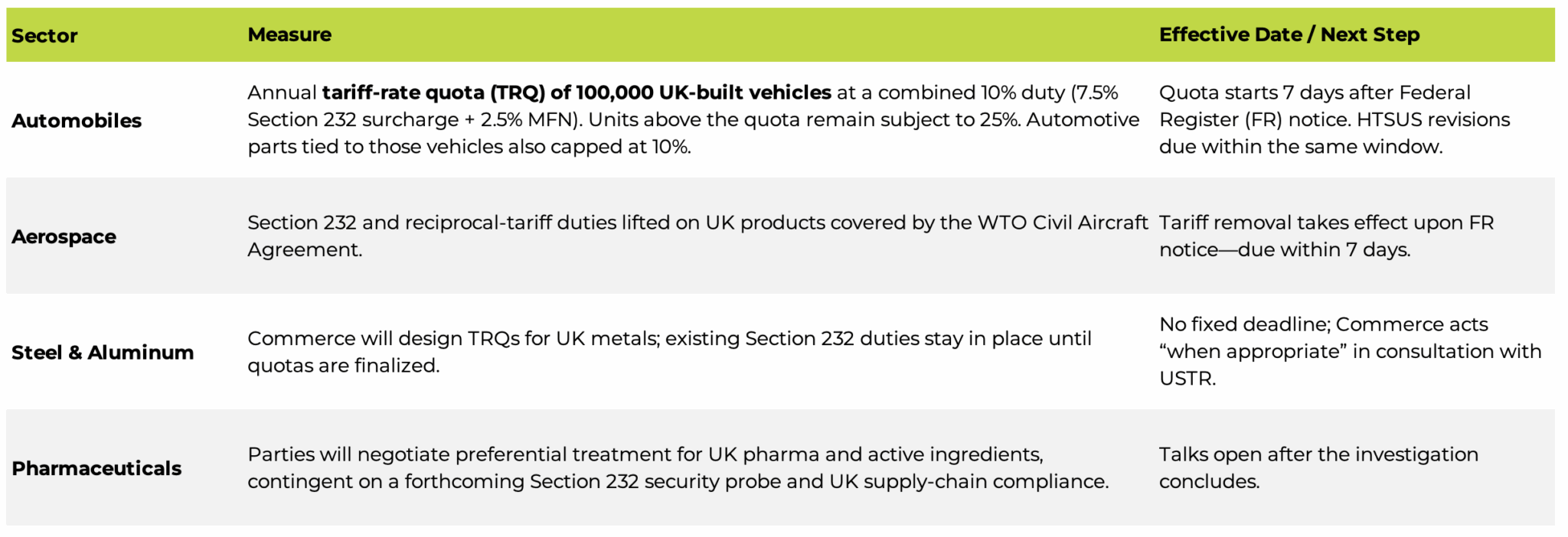
ADMINISTRATIVE NEXT STEPS
- The Department of Commerce must publish HTSUS revisions covering automobiles and aerospace products within seven days of the order’s appearance in the Federal Register.
- Consultations on steel and aluminum quotas, along with the scope and timeline of the pharmaceutical investigation, are expected later in 2025.
- Importers and exporters that trade in U.K. goods should monitor forthcoming Federal Register notices and adjust shipment schedules to ensure eligibility for new tariff preferences as they come online.
Stay up-to-date on freight news with Green’s Weekly Freight Market Update by following us on LinkedIn. For continuous updates, make sure to check out our website at greenworldwide.com.



